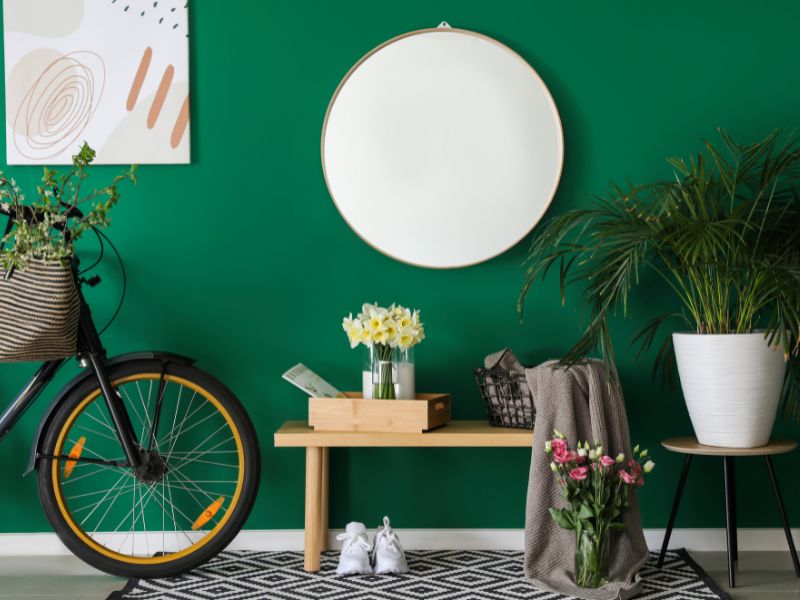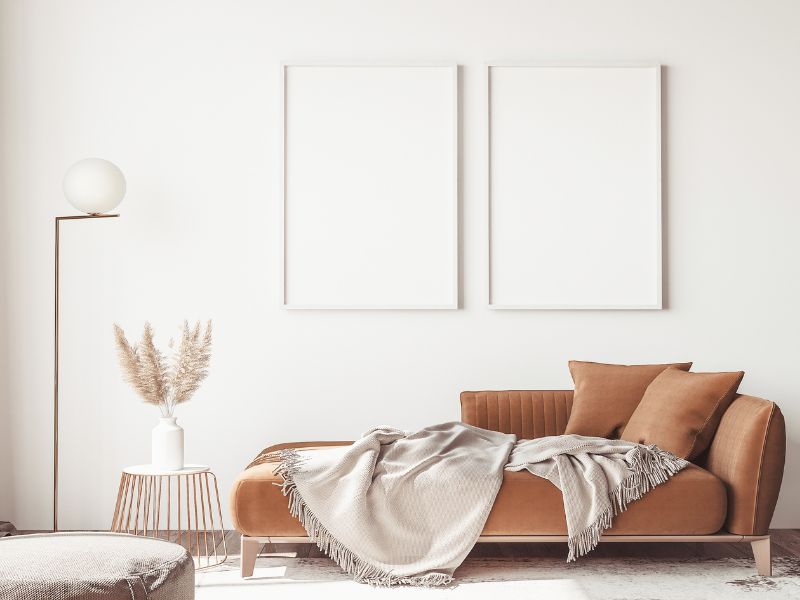To attract high-quality tenants and maximize your investment returns, it is crucial to present your rental property in its best possible condition. If the property appears worn-out or messy, it becomes more difficult for potential renters to envision themselves living there. Therefore, it is essential to dedicate time and effort to sprucing up the place before listing it on the market. By doing so, you can create a home that prospective tenants won’t be able to resist, increasing the chances of receiving offers.
To assist you in creating a rental property that tenants will love, we have compiled this guide on decorating your property. It explains the necessary steps you should take to ensure your property becomes a highly sought-after option in the market.
Furnishings
When renting out a property, you have the option to offer it furnished, part-furnished, or unfurnished. Your choice will depend on the type of renters you prefer and the target market for your property. For example, a family is more likely to bring their own furniture, while a young working tenant may prefer a furnished place.
If you decide to furnish the property, you’ll need to determine what furniture to provide and how much you’re willing to invest. While there are no strict rules about what you must offer, renters generally expect certain essentials, such as a bed, sofa, wardrobe, and a table with dining chairs. It’s also customary to include basic appliances, like white goods, even if the property is advertised as unfurnished.
If your property already has built-in storage, you might consider adding a chest of drawers for additional storage space. Think about including other furniture pieces like a coffee table, TV stand, or extra storage options. You don’t need to go overboard, but you want your property to stand out from other rentals in the market.
Colour tones

Choosing the right color tones for your rental property can be a matter of debate. In general, it is advisable to opt for neutral colors. Different people have different preferences, and while one potential renter might appreciate your bold red bedroom, it could be a turn-off for another.
When decorating a rental property, it is best to stick with beiges, whites, and greys. This applies to the walls, bathroom tiles, and even furniture colors. Keeping everything neutral allows tenants to personalize the space with their own colorful items. Rental properties on the market rarely feature specific features or color schemes, so it’s safer to go for a neutral and universally appealing palette.
Mirrors and wall art

While adding a mirror or wall art can enhance the cozy atmosphere of a property, it is not necessary and might be best to avoid altogether. Personal preferences regarding items like wall art are subjective and can vary among renters.
Spending money on wall art may not be practical if a renter asks for its removal before the tenancy begins. Additionally, as the landlord, you would be responsible for replacing any damaged wall art or mirrors.
Including mirrors in the property is optional, as renters typically don’t expect them to be provided. Wall art and mirrors are usually items that tenants bring with them from previous residences, allowing them to hang their own decorations. However, it is important to guide them to use self-adhesive strips to avoid damaging the walls while expressing their personal style.
The garden

Having outdoor space, such as a patio, garden, or balcony, can significantly enhance the appeal of a property, particularly in light of the COVID-19 pandemic. There has been a noticeable increase in the number of inquiries for properties with such amenities. However, if a prospective tenant arrives at a property and discovers an unkempt garden with overgrown weeds, they are unlikely to consider renting it.
If your property includes outdoor space, it is essential to ensure it appears presentable before viewings. Take the time to clear out weeds, trim the grass, and water the plants. While the tenant will be responsible for maintaining the garden once they move in, it is your responsibility to ensure it looks inviting when the property is listed on the rental market.
The same applies to any outdoor space at the front of the property. Before viewings, make sure to thoroughly tidy up this area to create an extra “wow” factor. Remember, first impressions matter, and you’ll want your property to have excellent curb appeal when potential renters arrive for viewings.
Storage space

In rental properties, particularly apartments in city locations, space is often limited. Whether someone is a renter or a homeowner, having a little extra room to store their belongings is always desirable. As a landlord, you can be resourceful with furnishings to optimize space.
Installing wall shelves, providing ottoman beds, and offering footstools with storage compartments can all contribute to creating additional storage space for renters. By incorporating these clever storage solutions, your rental property will likely appear more appealing compared to similar properties in the area. The added benefit of extra storage can be a significant selling point for prospective tenants.
Light fixtures, blinds and curtains

There are no strict rules regarding what light fixtures you should provide in a rental property. However, if you only leave a bare bulb hanging from the ceiling, it is unlikely to excite potential renters.
When it comes to light fittings, opt for simplicity. Stores like Ikea and Made offer affordable yet stylish options, allowing you to install attractive light fixtures without breaking the bank.
For window treatments such as blinds and curtains, stick to plain and neutral designs. Avoid using loud colors or gaudy patterns. Before installation, it’s essential to test the blinds to ensure they are easy to operate and clean.
By keeping the light fittings and window treatments simple and tasteful, you can create a more appealing atmosphere in your rental property.
Bathroom tiling

Opting for tiling instead of paint in your rental property is a wise decision due to its ease of cleaning and durability. Although it may require a higher upfront investment, the long-term benefits will save you money on frequent bathroom redecorations and help maintain a newer appearance for a longer time. In smaller spaces, you might consider tiling halfway up the walls and painting the remaining area to create a sense of spaciousness.
When choosing tile styles, it is advisable to stick to neutral options. Darker colors tend to be more suitable for bathrooms since even the smallest marks are easily visible on lighter tiles. By selecting neutral and darker tones, you can ensure that your bathroom remains looking clean and fresh, even with regular use.
The virtue of keeping it simple
Striking a balance between providing a cozy rental property and avoiding excessive furnishings is crucial. It’s important to keep in mind that as the landlord, you are responsible for anything included in the property. If an item breaks through no fault of the tenant, you will need to replace it. Setting expectations of certain amenities and then suddenly removing them can lead to resentment and strain your relationship with the tenants.
Furthermore, you have a legal obligation to ensure the safety of the items and appliances you provide. If an unsafe appliance causes harm to a tenant or damages their personal property, you may be liable for compensation or face legal consequences for negligence.
For these reasons, it is wise to keep things simple. Unfurnished properties typically require providing essential appliances like refrigerators and washing machines. If you offer a furnished property, it is not necessary to include excessive items beyond appliances and essential furniture such as beds and sofas.
While it is possible to include more in the property, remember that you are responsible for the initial furniture costs and any potential replacements. Consider the financial implications and weigh them against the preferences of tenants seeking fully furnished accommodations.


